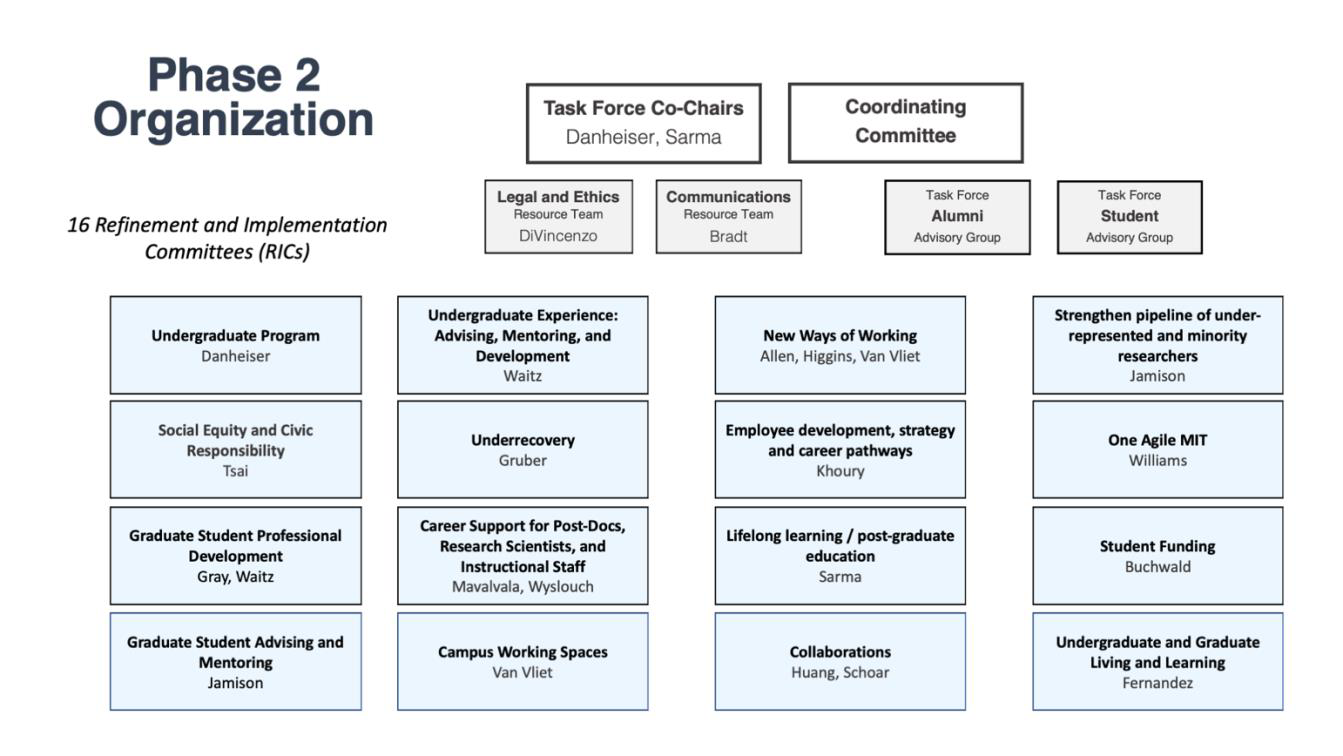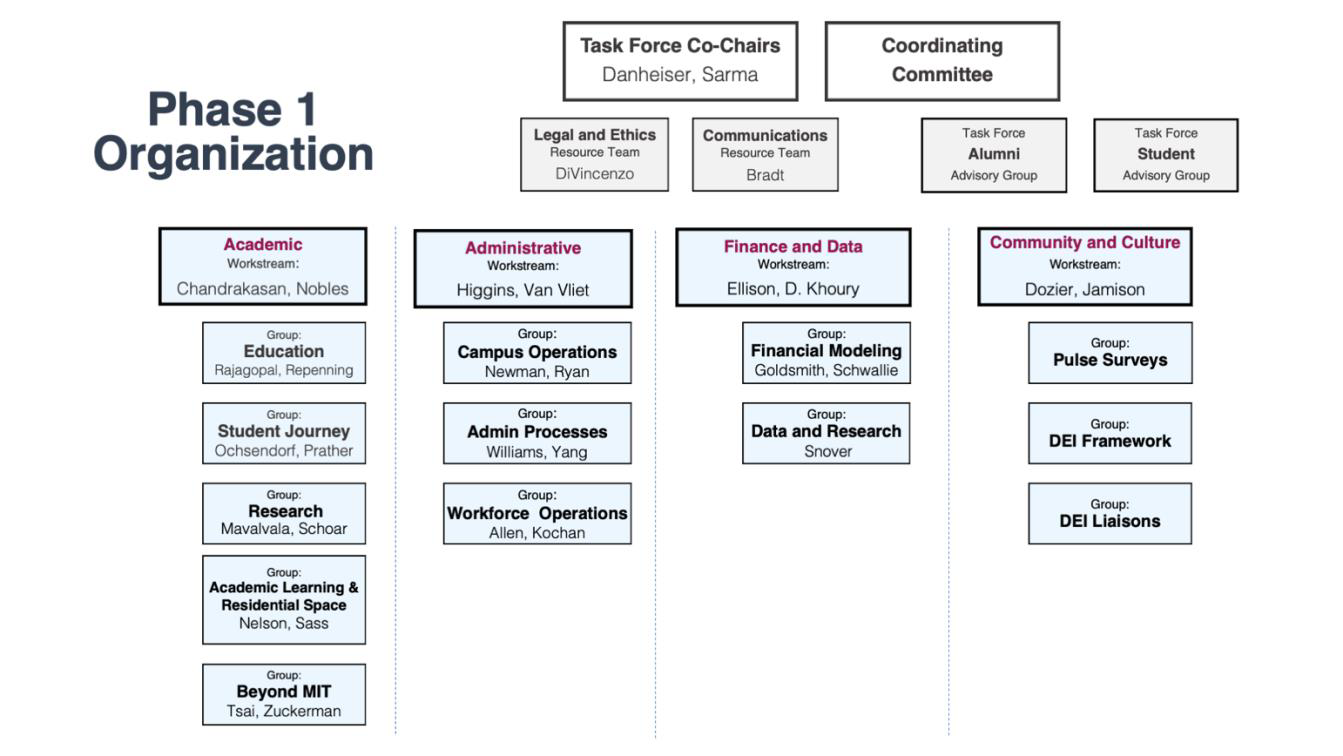Overview of Task Force 2021 and Beyond
Task Force 2021 Opening Charge
Covid-19 required the MIT community—individually and together—to suddenly redefine the way we live and work, the way we learn and teach, and the way we conduct research. It forced a radical withdrawal from the campus in spring 2020, and imposed a serious financial threat to the Institute and to many in our community. There may be no full return to our familiar “normal.”
While MIT continues to manage through this emergency, Task Force 2021 and Beyond will seek to use the lessons of this extraordinary time to explore how the Institute might invent a new future in which it and others can thrive. The task force will ask, What have we learned about what we treasure most in the MIT experience? What aspects of this experience caused the most frustration? What worked better than we hoped? And what might be open to constructive change?
The task force will distill and apply the knowledge we have gained together to help us imagine an MIT that is better, safer, more flexible, more effective, more efficient, more sustainable, more inclusive, more equitable, more affordable, and more financially resilient in the long term, while sustaining the Institute’s distinctive values and culture and its dynamic approach to education, research, and innovation.
In short, by drawing on expertise and experience from across the community, Task Force 2021 and Beyond is charged with developing the blueprints for building a better MIT.
Addressing the New Normal
Example of areas that have been impacted globally by the Covid-19 pandemic:
- Economy
- Global trade
- International relations
- National politics
- Employment/jobs
- Education
- Health care
- Sustainability
- Retail
- Travel and hospitality
- Commercial real estate
Areas at MIT that have been impacted by the Covid-19 pandemic include the following:
- Institute finances, including endowment, future giving, and the global economy
- Student/family financial health
- Education
- Research directions and funding
- Student life
- Job market
- International relations
- Commercial real estate
- Approaches to work, including working from home, hoteling
- Digital transformation
Process Summary

Phase One
Phase One of the Task Force called on the working groups of the four Task Force workstreams to generate ideas and proposals per the charge of the task force. During this phase, dozens of working group meetings took place in addition to task force plenary sessions, a community forum, engagement with an Alumni Advisory Group and a Student Advisory Group, other consultations, and a community-wide idea bank. Over 50 ideas were developed by the working groups in Phase One, and these were announced and posted for community comment in mid-December 2020.
Phase Two
Phase Two of this effort focused on refinement and implementation planning for the phase one ideas. The primary vehicle for advancing this work were sixteen Refinement and Implementation Committees (RICs) charged to develop specific and concrete proposals, and define implementation plans for those proposals.
Organization
Task force co-chairs
Rick Danheiser, Chair of the Faculty; Arthur C. Cope Professor of Chemistry
Sanjay Sarma, Vice President for Open Learning; Fred Fort Flowers (1941) and Daniel Fort Flowers (1941) Professor of Mechanical Engineering
Phase One structure
Phase Two structure

Summary Themes of Ideas and RICs
The ideas of the RICs were organized into five themes, shown in the “dome” graphic below. The base represents the need for the Institute to enhance and upgrade various systems and processes. The pillars correspond to the overhauling needed in response to the lessons of 2020. The dome describes a key outcome that has become even more important for the years ahead.


